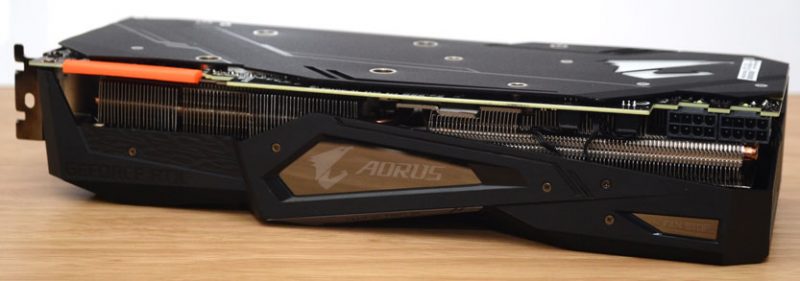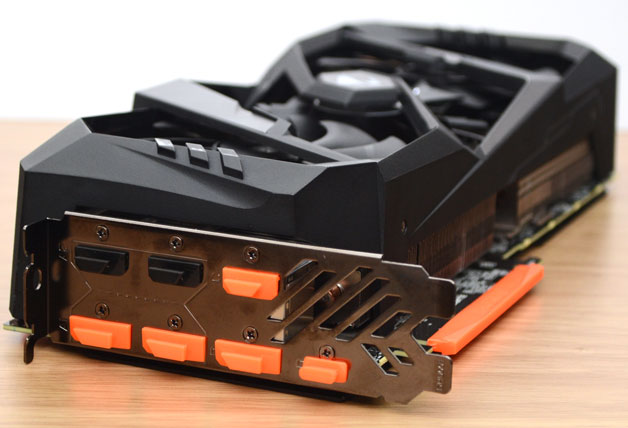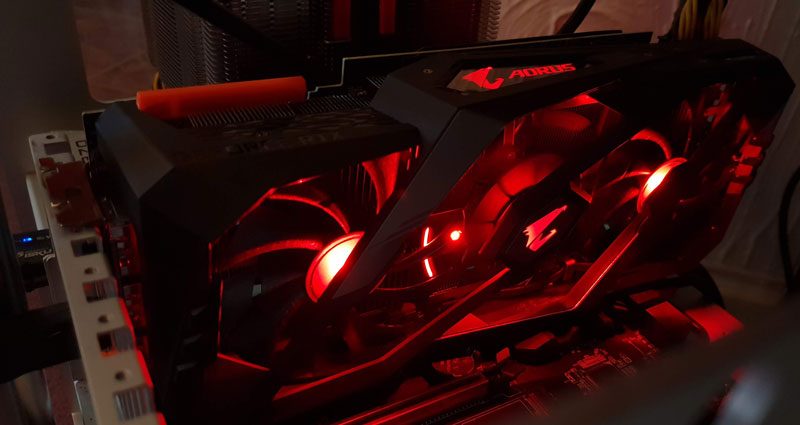AORUS XTREME RTX 2080 Graphics Card Review
Peter Donnell / 6 years ago
A Closer Look
Aorus graphics cards have always had a more extreme aesthetic, built for the gaming market, and clearly not hiding that fact. This one may be one of their most outlandish designs yet though. The fans are almost completely exposed, with just some funky mounts passing over the middle to, well, uh, mount them.

What’s really awesome is that they’ve crammed in 3 x 100mm fans. I literally do mean crammed too. The middle fan has huge chunks cut into its fan blades, allowing them to pass the end fans without conflict. It’s pretty clever and almost looks like a gearing system. Of course, the middle fan also has a very different blade curve to it, no doubt to compensate for the reduced fan surface area.

Airflow
All that airflow is driven through a huge two-piece radiator design with four thick copper coated heat pipes running through the card. There’s a mirror-like finish on the Aorus Logo as well as the Fan Stop logo (bottom right). However, these are RGB lit when powered on; although you can turn the lights off if required.

The card draws its power from two 8-pin headers, and with the big overclocks out of the box, it’ll need them both.

The shroud is fairly minimal on the side of the card, which should allow for heat to escape more easily; even when cooling with zero RPM fan mode on.

Backplate
More passive cooling comes courtesy of this huge heatsink on the read of the card. It looks fantastic too, and even better with that stunning Aorus eagle head on the back; which is also RGB, woo-hoo!

This graphics card has one more party trick for us, thanks to its SEVEN display outputs. They’re colour coded, as I think you can only use four at a time; 3 x DP + 1 HDMI + Type-C, or the second mode of 3 x HDMI + 1 x DP + Type C. Of course, that’s awesome for triple monitor display setups, as you can use one kind of cable and no adaptors.

RGB
There are lights on the Aorus and Fan logos on the side, as well as on the Aorus head logo on the backplate. However, there are small LED lights on the ends of some of the fan blades. This means as the fans spin, they create a ring of lights that can be extensively customised and reactive for some pretty unique effects; at least in the GPU market.























